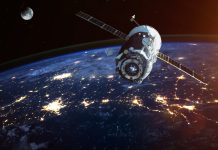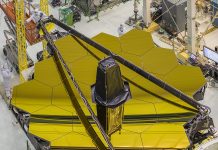The Japan Aerospace Exploration Agency (JAXA) is embarking on a groundbreaking mission to develop a new and massive reusable next-gen rocket
This endeavour is set to revolutionise Japan’s future space transportation capabilities and is a collaborative effort between JAXA and Mitsubishi Heavy Industries (MHI).
This is a massive step forward in sustainable space exploration and technological innovation.
Reusable next-gen rocket
The primary objective of this joint venture is to create a reusable rocket that not only enhances payload capacity but substantially reduces launch costs.
This initiative aligns with Japan’s revised space policy, which emphasises the need for research and development in next-generation rockets following the introduction of the new H3 rocket.
An innovative approach to reusability
Under the revised space policy, JAXA has initiated research on a new-generation rocket incorporating first-stage reusability in partnership with MHI.
The H3 rocket, introduced earlier this year, was intended as a more efficient and cost-effective successor to the H-2A rocket.
However, it faced a setback during its maiden flight due to second-stage issues. A mixture of liquid hydrogen and liquid oxygen fuels both missiles.
One of the critical considerations for this new rocket is the choice of fuel. While liquid hydrogen remains a contender, liquid methane is also being explored as a potential fuel.
This decision will have significant implications for the rocket’s performance and reusability.
Competing on the global stage in pursuit of reusable rockets
Notably, Japan is not alone in its pursuit of reusable rockets. Companies like SpaceX, Blue Origin, ULA in the United States, and Chinese entities such as CASC, Landspace, and iSpace have already launched or are close to launching rockets using methane-liquid oxygen propulsion.
JAXA aims to reduce the cost per kilogram to low Earth orbit (LEO) by approximately half compared to the H3 rocket while increasing launch frequency.
Charting a course for the future with this space project
This ambitious rocket project promises to deliver cargo vehicles to lunar orbit and facilitate lunar landings, aligning with Japan’s broader space transportation plans.
Anticipated for the 2030s, this new rocket venture may expand to support full reuse and human spaceflight, ushering in a new era of Japanese space exploration.
The plan also encourages private space companies, including startups like Interstellar, to contribute to Japan’s space ambitions, fostering partnerships and innovation within the nation’s space sector.
Japan’s vision for the future of space transportation is ambitious and poised to play a pivotal role on the global stage.
Editor's Recommended Articles
-
Must Read >> How Japan prioritises preventative care














